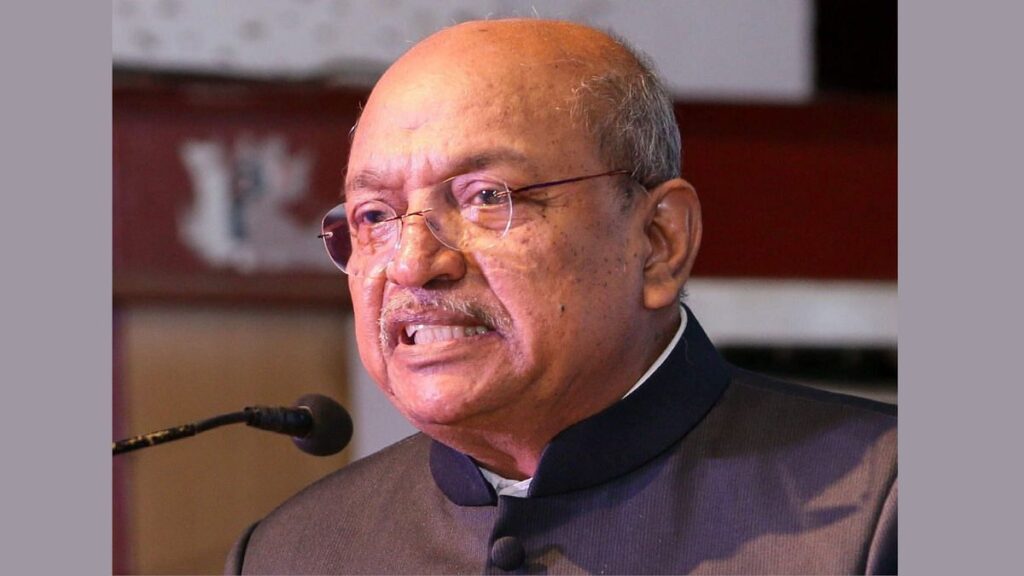BN Kumar, 68, is synonymous with the environmental movement in Navi Mumbai. The former journalist took to the protection and nurture of the environment when he saw destruction all around him. He spoke to S Balakrishnan in an exclusive interview.
Excerpts: You were a journalist earlier. How did you get into the environmental movement? A journalist is a journalist forever! Being a journalist, I have been observing and writing about the environmental degradation in Mumbai and Mumbai Metropolitan Region (MMR) with people generally remaining passive and the concerned authorities being unconcerned. We saw the Parsik Hill devastation in the name of quarrying.
That’s where I started getting involved and launching the #SaveParsikHills campaign. Then, fellow environmentalists such as Stalin D of Vanashakti and Nandakumar Pawar of Sagar Shakti inspired me to study the destruction of mangroves and wetlands in the Uran region under the guise of various projects such as JNPA, JNPA SEZ and NMSEZ. When was Nature Connect formed and what role does it play in nurturing the environment? We started The Nature Connect platform in early 2017 to focus on the all-round environmental degradation and to raise public awareness.
We were inspired by the World Environment Day Message – Connect With Nature. Subsequently, we went in for registration as a not-for-profit outfit under the Companies Act. It was during that time that we thought of this catchy word NatConnect and floated the company NatConnect Foundation.
What has been the biggest success story of Nature Connect? NatConnect achieved many successes and even won global awards. But the biggest success, I must say, is the awareness among the people about the environment and the tremendous teamwork from all across Mumbai and MMR. Thanks to our persistent efforts, we have been able to move the Mantralaya into action mainly due to the quick responses from the Chief Ministers – from Devendra Fadnavis to Uddhav Thackeray to now Eknath Shinde.
CIDCO is the biggest culprit as far as the environment is concerned. When Navi Mumbai was planned in the early 1970s, CIDCO did focus on at least 40% open space. Over the years, CIDCO is now completely ignoring the environment.
Otherwise, the city planner would not allot mangrove zones and wetlands for infrastructure projects such as JNPT and NMSEZ. Despite the Bombay High Court judgement to handover all mangroves to the Forest department for conservation, CIDCO, NMSEZ and JNPT continued to sit pretty on mangroves. Initially, JNPT even denied the existence of any mangroves under its jurisdiction, but with our RTI applications, the country’s largest container port was forced to admit the existence of over 900 hectares of mangroves under it.
They handed over the plants to the forest department but kept about 100 hectares with them. There is still no account of the mangroves and wetlands under NMSEZ. We continue to fight for it.
CIDCO allotted a mangrove zone to the Tirupati Balaji Temple project at Ulwe. We naturally opposed it and the CM and Deputy CM cancelled their Bhoomi Puja programme for the temple. Now, TTD will have to apply for CRZ clearance.
Do you think the government and local bodies like the NMMC care about the environment? NMMC is concerned with the environment. It opposed Parsik Hills’ quarrying as the stone dust was contributing to the city’s air pollution. However, the civic body is helpless since CIDCO continues to hold control over lands and open spaces.
NMMC’s draft development plan appears helpless amid utterly dismal standards of open space and tree cover as it does not own any land. There is no talk of rainwater harvesting. NMMC has to assert itself as a self-government body and get hold of the city.
For the uninitiated, Navi Mumbai cuts into Thane and Raigad. NMMC governs the Thane district part of the city. It has to get hold of all open spaces and plots.
Apart from people’s apathy what are the main hurdles in improving green cover? Mainly the authorities’ neglect. There is no accountability. Secondly, lack of motivation from the top.
Third is corruption. For a few bucks they tend to sacrifice the City’s interests. What are the future plans of Nature Connect? Where do you raise your funds from? I think we have been able to lay a good foundation with the support of my media friends.
We want to build on this and work on the primary goal of making officials accountable. For instance, the Environment department does not attend the High Court appointed mangrove and wetland committee meetings. The committees are headed by an IAS officer and he may not like to argue with another IAS man heading the environment department.
This is not the way to work. If the Environment department remains unconcerned over our complaints of mangrove and wetland destructions, who else will? Why should we run to courts for every small thing? As it is, the courts are overburdened and we do not want to increase the load. We also want to work on an environmental audit which is regrettably missing now.
For instance, the project proponents get clearance for killing certain numbers of mangroves for their projects. However, there is no cross-check on the actual numbers destroyed. There is no system for overseeing this destruction or reporting back.
Also, there is no regulation for hill development. (To receive our E-paper on WhatsApp daily, please click here. To receive it on Telegram, please click here .
We permit sharing of the paper’s PDF on WhatsApp and other social media platforms. ).
From: freepressjournal
URL: https://www.freepressjournal.in/mumbai/environmentalist-former-journalist-bn-kumar-says-no-check-on-destruction-of-mangroves
